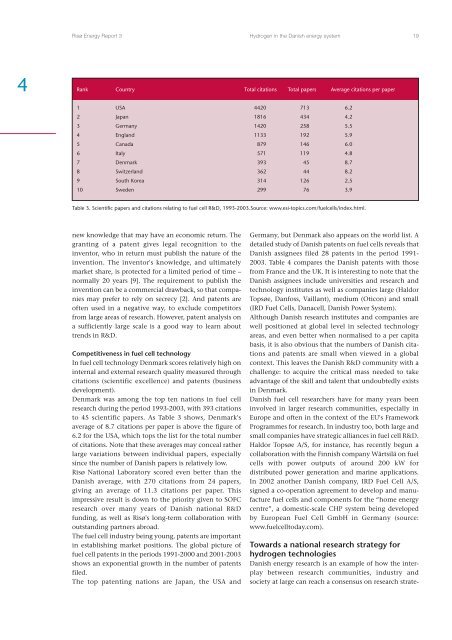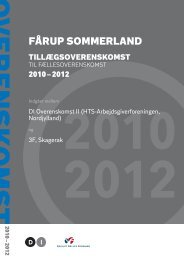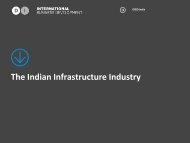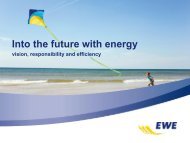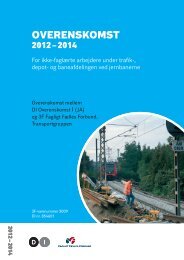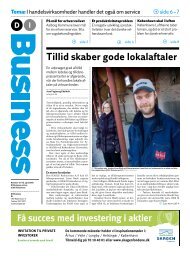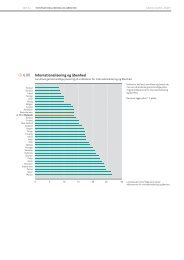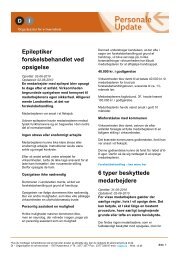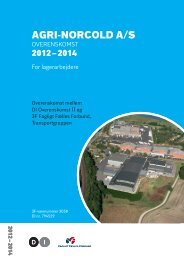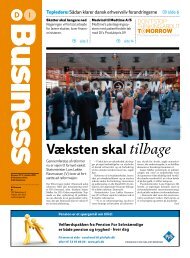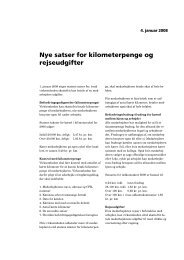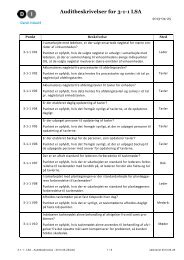Hydrogen and its competitors, 2004
Hydrogen and its competitors, 2004
Hydrogen and its competitors, 2004
Create successful ePaper yourself
Turn your PDF publications into a flip-book with our unique Google optimized e-Paper software.
Risø Energy Report 3<strong>Hydrogen</strong> in the Danish energy system 194Rank Country Total citations Total papers Average citations per paper1 USA 4420 713 6.22 Japan 1816 434 4.23 Germany 1420 258 5.54 Engl<strong>and</strong> 1133 192 5.95 Canada 879 146 6.06 Italy 571 119 4.87 Denmark 393 45 8.78 Switzerl<strong>and</strong> 362 44 8.29 South Korea 314 126 2.510 Sweden 299 76 3.9Table 3. Scientific papers <strong>and</strong> citations relating to fuel cell R&D, 1993-2003.Source: www.esi-topics.com/fuelcells/index.html.new knowledge that may have an economic return. Thegranting of a patent gives legal recognition to theinventor, who in return must publish the nature of theinvention. The inventor's knowledge, <strong>and</strong> ultimatelymarket share, is protected for a limited period of time –normally 20 years [9]. The requirement to publish theinvention can be a commercial drawback, so that companiesmay prefer to rely on secrecy [2]. And patents areoften used in a negative way, to exclude <strong>competitors</strong>from large areas of research. However, patent analysis ona sufficiently large scale is a good way to learn abouttrends in R&D.Competitiveness in fuel cell technologyIn fuel cell technology Denmark scores relatively high oninternal <strong>and</strong> external research quality measured throughcitations (scientific excellence) <strong>and</strong> patents (businessdevelopment).Denmark was among the top ten nations in fuel cellresearch during the period 1993-2003, with 393 citationsto 45 scientific papers. As Table 3 shows, Denmark'saverage of 8.7 citations per paper is above the figure of6.2 for the USA, which tops the list for the total numberof citations. Note that these averages may conceal ratherlarge variations between individual papers, especiallysince the number of Danish papers is relatively low.Risø National Laboratory scored even better than theDanish average, with 270 citations from 24 papers,giving an average of 11.3 citations per paper. Thisimpressive result is down to the priority given to SOFCresearch over many years of Danish national R&Dfunding, as well as Risø's long-term collaboration withoutst<strong>and</strong>ing partners abroad.The fuel cell industry being young, patents are importantin establishing market positions. The global picture offuel cell patents in the periods 1991-2000 <strong>and</strong> 2001-2003shows an exponential growth in the number of patentsfiled.The top patenting nations are Japan, the USA <strong>and</strong>Germany, but Denmark also appears on the world list. Adetailed study of Danish patents on fuel cells reveals thatDanish assignees filed 28 patents in the period 1991-2003. Table 4 compares the Danish patents with thosefrom France <strong>and</strong> the UK. It is interesting to note that theDanish assignees include universities <strong>and</strong> research <strong>and</strong>technology institutes as well as companies large (HaldorTopsøe, Danfoss, Vaillant), medium (Oticon) <strong>and</strong> small(IRD Fuel Cells, Danacell, Danish Power System).Although Danish research institutes <strong>and</strong> companies arewell positioned at global level in selected technologyareas, <strong>and</strong> even better when normalised to a per capitabasis, it is also obvious that the numbers of Danish citations<strong>and</strong> patents are small when viewed in a globalcontext. This leaves the Danish R&D community with achallenge: to acquire the critical mass needed to takeadvantage of the skill <strong>and</strong> talent that undoubtedly existsin Denmark.Danish fuel cell researchers have for many years beeninvolved in larger research communities, especially inEurope <strong>and</strong> often in the context of the EU's FrameworkProgrammes for research. In industry too, both large <strong>and</strong>small companies have strategic alliances in fuel cell R&D.Haldor Topsøe A/S, for instance, has recently begun acollaboration with the Finnish company Wärtsilä on fuelcells with power outputs of around 200 kW fordistributed power generation <strong>and</strong> marine applications.In 2002 another Danish company, IRD Fuel Cell A/S,signed a co-operation agreement to develop <strong>and</strong> manufacturefuel cells <strong>and</strong> components for the “home energycentre”, a domestic-scale CHP system being developedby European Fuel Cell GmbH in Germany (source:www.fuelcelltoday.com).Towards a national research strategy forhydrogen technologiesDanish energy research is an example of how the interplaybetween research communities, industry <strong>and</strong>society at large can reach a consensus on research strate-


